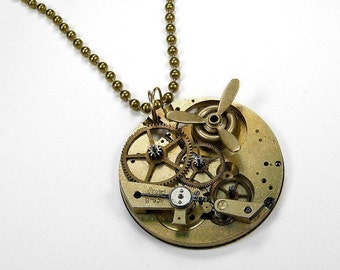
One of the disadvantages of an automatic watch, namely upkeep, works in the opposite direction in this case when it guarantees a long lifetime of a timepiece. Rolex, the most famous brand ever, for instance, doesn’t have any quartz watches in its line-up, which illustratively describes the difference between quartz and automatic calibers in terms of prestige.Īnother advantage automatic timepieces have over their quartz equivalents is their value after years and decades. Take any world-famous watch, whether it be Rolex Submariner, Omega Seamaster, or IWC Portugieser – they all run on automatic calibers. They are the representation of watchmaking virtuosity and craftsmanship. Therefore, watches carrying automatic calibers are considered intricate and sophisticated. The calibers consist of more than a hundred miniature parts, and assembling them into one cooperative unit takes time and requires skills. The first characteristic supporting automatic watches is prestige.

When so far quartz watches have had overwhelming advantages over automatic equivalents, the following three characteristics work in favor of the latter. It’s not cheap either with prices exceeding $100. Since the movement consists of wheels and gears, it needs oiling and cleaning every 3-5 years to maintain flawless operation. Although it has a self-winding mechanism doing the job, you still have to keep an eye on it and shake it/manually wind it every once in a while.Īfter all, the watch has a typical power reserve of around 40 hours, meaning it will stop working after placing it on a table for the whole weekend.Īnother attention-requiring factor with automatic watches is the frequent need for servicing. The most frequent operation you have to face with an automatic watch is keeping it wound. On the contrary, automatic watches require constant attention due to their build. It doesn’t have to be serviced or cleaned inside, making it a relatively carefree type of watch to own. The only thing that a quartz-driven ticker requires is a battery replacement. Maintenance-wise, you can expect your quartz watch to receive much less attention and upkeep than an automatic timepiece. For example, several acknowledged brands, such as Seiko and Orient, often sell automatic watches for less than $200. However, not all self-winding automatic watches cost that much. Therefore, you can find decent quartz watches with price tags of around $100-$200 and similar timepieces running on automatic movements costing $400-$500 and upwards. On the contrary, automatic calibers consist of numerous tiny parts that are time-sensitive and labor-extensive to assemble, in that raising the overall cost of production. Since the production of quartz calibers is not labor-extensive and the number of parts that go into the movement is low, the price of the movements is very affordable. The difference in valuation is down to the dissimilar levels of intricacy. When it comes to the prices of watches, quartz timepieces cost significantly less than automatics. Therefore, a quartz watch deviates about 3-4 seconds in a week, while an automatic equivalent can be off by more than a minute at the same time frame.

In other words, a quartz watch loses or gains approximately half a second per day.Īn automatic watch, which uses mechanical power and is therefore more prone to various influences, has an average accuracy of +/- 20 seconds per day. The most significant difference between quartz and automatic watches lies is their accuracy.īecause of the piezoelectric attributes and frequency stability, the quartz-equipped timepiece holds an accuracy of about +/- 15 seconds a month. Then comes a balance wheel that utilizes these equal parts by beating back and forth at a constant rate. The energy that is accumulated in the mainspring moves through gears to the escapement module that measures it into equal parts. The more the movement, the more the mainspring eventually gets winded up. It all starts from the natural motions of a wrist when the freely spinning rotor at the back of a watch captures them and conserves them into the mainspring. In contrast to a quartz timepiece, an automatic watch doesn’t use electrical power but instead employs mechanical energy for the watch to run. When the first of its kind cost as much as a new car, then modern quartz watches can be very affordable due to automatization and mass production.

Quartz watches have been around since 1969 when Seiko came out with the world’s first quartz watch, Seiko Astron. The watch circuit then measures the current and turns every 32,768 vibrations into one electric pulse, making the second’s hand move once in every second.


 0 kommentar(er)
0 kommentar(er)
